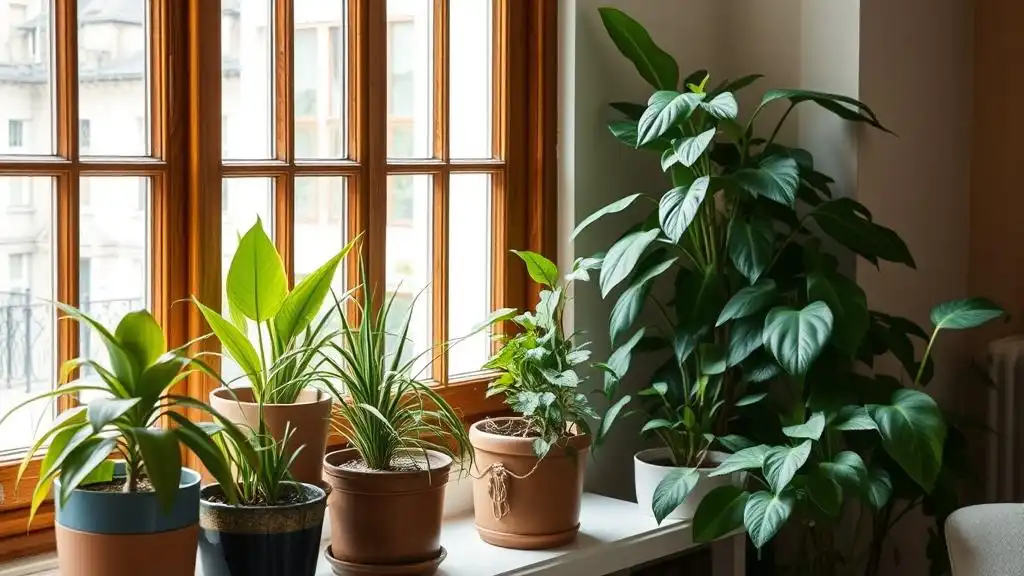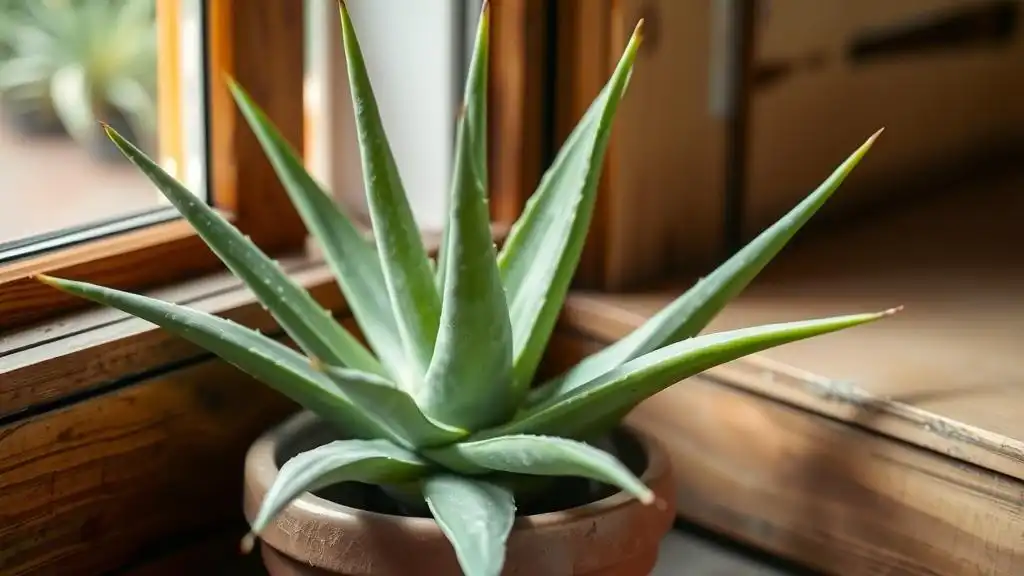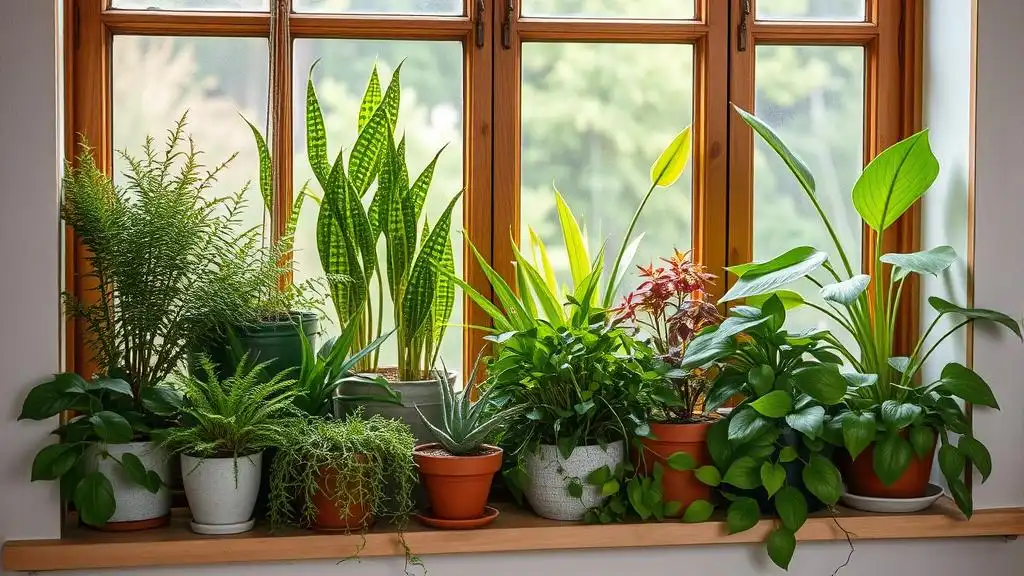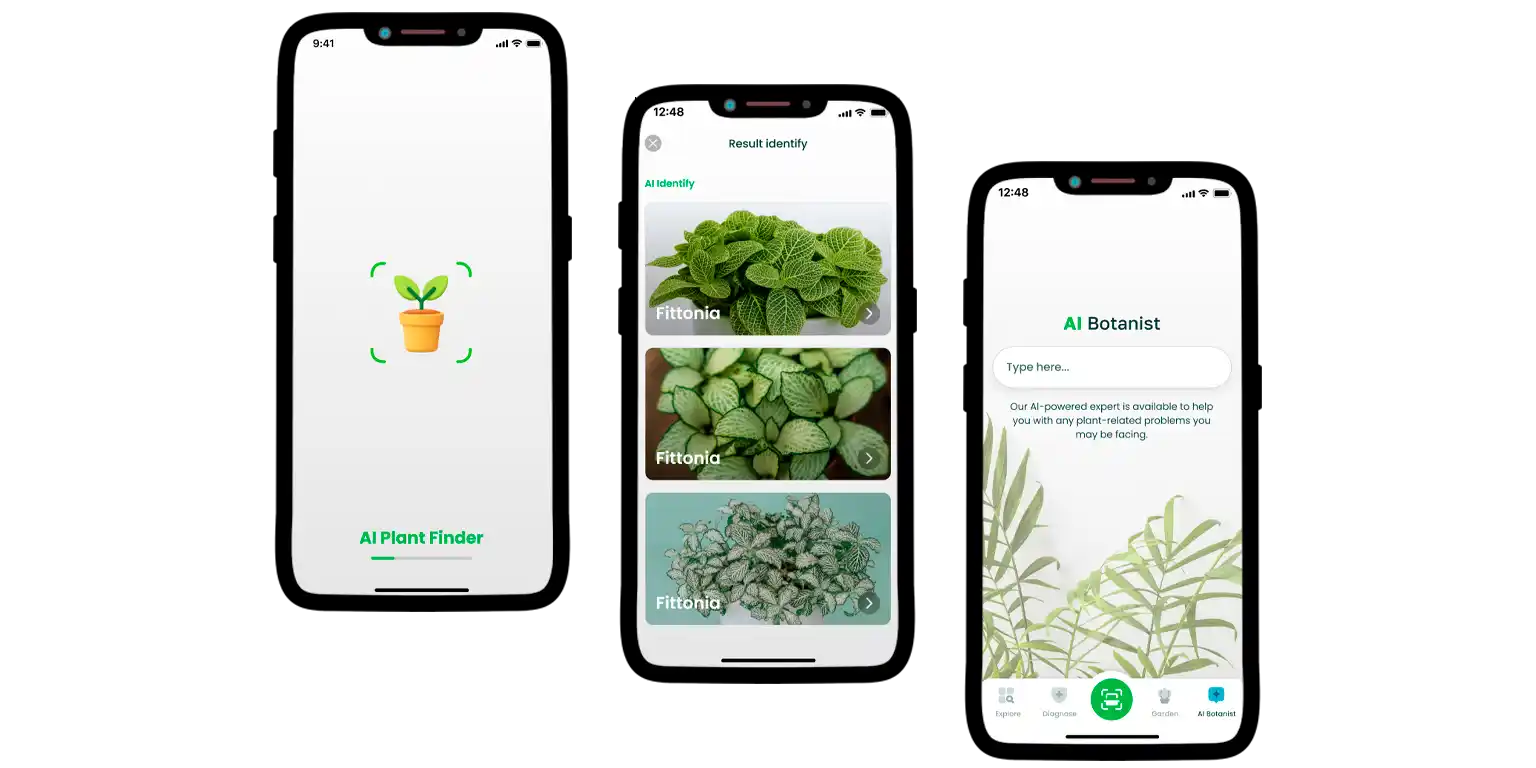
Discover the power of oxygen-producing plants for your indoor garden. Learn which plants are the top oxygen producers and how to select the perfect ones for your space. Improve air quality and create a healthier home environment with the AI Plant Finder app.
Contents:
Nowadays, life surrounded by greenery is a luxury that requires different resources, namely space, appropriate conditions, and time. Fortunately, the cultivation of indoor gardens becomes a widespread practice thanks to their aesthetic potential and practical advantages, too. While the allure is evident, incorporating indoor gardens into your home environment offers a lot of benefits, i.e., enhances air quality and improves your life as well.
Oxygen production is the main function of any houseplant, but the question of what plants produce the most oxygen remains a burning one. In this material, one may get acquainted with timeless plant solutions and explore how to select a proper instance for indoor gardens with ease.

Why Do We Get Oxygen-Producing Plants?
One of the key reasons why it might be necessary to create an indoor garden is its ability to absorb pollutants and produce oxygen, a crucial element of the air we breathe. As nature intended, plants play a vital role in maintaining a balance of gases and making the air more oxygen-rich.
The process of photosynthesis, which the plants’ lives totally depend on, presupposes the production of chemical energy and oxygen as a waste product from carbon dioxide and water with the use of sunlight. Roughly speaking, this means that a plant absorbs carbon dioxide from the atmosphere and water from the soil so as to convert light energy into a chemical one, and oxygen is one of the products of the mechanism.
Indoor environments, where we spend a significant amount of time these days, often lack appropriate ventilation. Being stagnant, the air typically accumulates toxic elements and carbon dioxide, and the right balance of gasses is no longer guaranteed. To mitigate these issues and take control over what is breathed in, it is important to replenish the oxygen levels and incorporate greenery into your housing “ecosystem.” But which plants produce the most oxygen?
What Plants Give Off the Most Oxygen?
Through understanding what house plants produce the most oxygen, one can efficiently create a suitable yet sustainable environment for both people and plants to stay healthy within the same area. The experience of many gardeners, be it an amateur plant lover or a skilled enthusiast, shows that there are a lot of excellent options to consider. Below, we have compiled a list of the most popular oxygen-producing plants for you to choose from.
Aglaonema
Scientific name: Aglaonema marantifolium var. commutatum
Also known as Chinese Evergreen or Philippine Evergreen, Aglaonema is a relatively small plant with massive dark green leaves mottled with yellow, pink, or red blotches all over the foliage. Although the plant is capable of thriving in low light and arid conditions, the most suitable environment means constant light, higher levels of humidity, and a warm daily temperature.
Aloe vera
Scientific name: Aloe barbadensis, Aloe perfoliata
When one asks what plant creates the most oxygen, Aloe vera is the first plant that comes to mind. It is a star of many social media platforms, for this succulent boasts its remarkable healing, cosmetic, and culinary attributes. Nevertheless, its benefits go beyond the previously-mentioned properties, since the plant is also known as a proficient oxygen producer. So as to successfully flourish, Aloe vera needs relatively dry conditions with high temperatures and full sun.

Anthurium
Scientific name: Anthurium andraeanum
With its vibrant, heart-shaped (and heart-colored) flowers, Anthurium is one of the most desired yet hard-to-maintain houseplants. What it needs to successfully thrive usually includes well-drained and moist soil, a high level of light the plant gets, and medium humidity as well.
Nevertheless, we recommend that you think twice before incorporating Anthurium into your indoor environment, as it is poisonous for humans and pets and, hence, may cause severe complications afterward.
Gerbera Daisy
Scientific name: Gerbera jamesonii
The herbaceous flowering plant is a popular choice for outdoor gardens, but many plant enthusiasts attribute this plant to the group of houseplants, too. To keep it thriving as much as possible, it is necessary to provide Gerbera Daisy with appropriate care. The most essential part is to ensure it is put into a permanently warm (not hot!) and sunny spot with lightly moist soil in the pot.
Chinese Money Plant
Scientific name: Pilea peperomioides
Chinese Money plant is a phenomenon. Today, most gardeners who struggle to find which plant gives the most oxygen frequently come across this peculiar species. As professional botanists say, the Chinese Money Plant is a great option for beginners, for it may tolerate inconsistent watering and fertilizing sessions. Nevertheless, it is always better to take good care of a plant for it to stay healthy and pleasing to the eye.
Peace Lily
Scientific name: Spathiphyllum
“Which indoor plants produce the most oxygen?”, you may ask. “Peace Lily”, we will answer. Peace Lilies are considered one of the most efficient natural air purifiers. In order to keep the plant thriving, one should provide it with low to moderate light conditions and moist yet not soggy soil. Remember that this beautifully arranged foliage with white “flowers” might be poisonous, so always keep it far from kids and pets as well.
Pothos
Scientific name: Epipremnum aureum
Another plant that helps filter indoor air and makes it healthier to breathe is Pothos. This vine is a fast-growing instance of flora that is characterized by heart-shaped green leaves with yellow to white blotches. The best part of the plant is that it may adapt to any house conditions and require an adequate amount of light and moisture as a rule. By the way, some varieties might be toxic for pets and humans, so make an informed decision before cultivating them.

How to Choose the Right Plant for Your Garden?
What is the most oxygen-producing plant? How to take care of it and what does it need to survive at home? There may arise dozens of worries during the selection; however, with proper preparation and assistance, it gets easier not to miss key aspects but to choose the right plant for your space. AI Plant Finder, an ultimate app designed for plant lovers of all levels, may help you go through this process efficiently and find the best plant type possible.
Check Light Requirements
Different plants have varying light preferences, and the lighting conditions in your indoor space are the most important aspect of the plant’s photosynthesis. Assess how much light your plants may get with the use of the Light Meter in the AI Plant Finder App. Point your camera at the spot where a plant is to be located and receive the most relevant info about the current level of illuminance.
Assess Space Availability
Consider the available space in your indoor garden when selecting plants. Some varieties, such as trailing vines of Pothos, are well-suited for small spaces or hanging baskets. Larger plants like Peace Lilies, though, may require more room to grow and flourish.
Evaluate Your Level
So as to understand whether you can meet the plant's needs, it is important to frankly analyze your abilities and willingness. Most plants require thorough attention and constant care, such as frequent watering and pruning. Luckily, with AI Plant Finder, you can set up Plant Care Reminders and receive alerts when it is time to proceed with essential procedures.
Consider Air-Purifying and Aesthetic Factors
The most pleasant part is to identify the air-purifying capabilities and aesthetic appeal of the plant you choose. Select the varieties that complement your interior and personal preferences. Therefore, you may choose the most appropriate yet captivating plant for your indoor environment.

Choosing what plant makes the most oxygen is a great investment into aesthetic satisfaction and your health, too. To create a thriving oasis, make sure you explore all the relevant information to successfully promote better air quality and overall well-being. Let your indoor garden flourish!